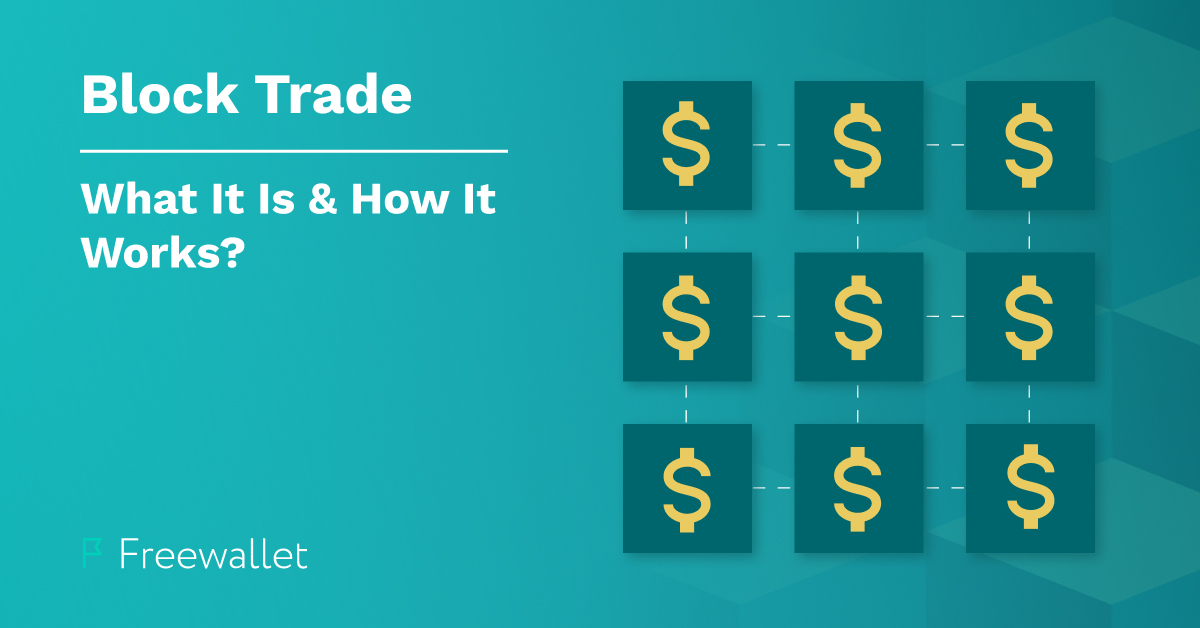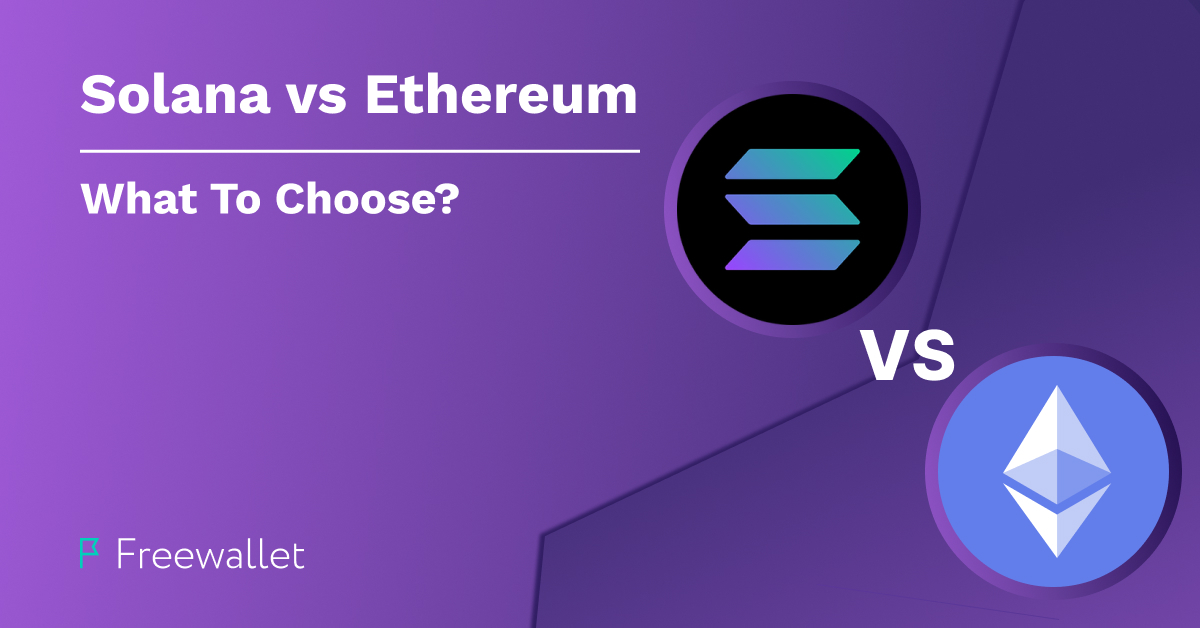
In today’s world, stock trading encompasses a sophisticated realm of knowledge that includes various methods traders utilize to buy and sell securities for profit. This article delves into a specific type of trade known as “block trade.”
We should state that despite the name, block trading appeared long before the invention of blockchain and cryptocurrencies. However, like many trading strategies, block trading is present in the crypto industry too.
From the article, you will learn how block trades work, what are the pros and cons of such trades, what are the examples of block trades, and so on. And, of course, we will start with the definition of the block trade term.
What are Block Trades?
Block trades involve large-scale securities transactions typically conducted outside public markets and negotiated confidentially between the involved parties. According to the New York Stock Exchange, block trades commence at 10,000 shares of stock traded simultaneously. Another definition stipulates that a transaction is classified as a block trade when its value reaches at least $200,000. It is important to note that many transactions involve much higher share numbers or values exceeding $200,000, imposing specific conditions for executing such transactions.
Image source: Investopedia
Individual investors typically do not engage in block trades due to the significant risks associated with such large-scale operations. Institutional investors and hedge funds are the usual participants in block trades, given their greater resources, experience, and risk management capabilities.
Frequently, block trades are split into several orders executed by different brokers to conceal the actual deal size from public view. Investors avoid conducting block trades on public markets because the substantial amounts involved in such transactions can impact asset prices significantly. These trades are structured as private purchase agreements and often involve intermediaries such as investment banks or other institutions capable of handling million-dollar transactions.
In cryptocurrency trading, block trading is utilized for high-volume crypto purchases negotiated privately away from public exchanges. Certain crypto platforms permit users to engage in block trading. Exchanges set minimum transaction sizes for these trades to facilitate executions outside public markets. Within the crypto space, high-volume transactions are commonly referred to as “whale transactions.” These transactions can cause significant fluctuations in crypto prices, often driving prices downwards.
How Block Trades Work?
Block trading is a sophisticated form of securities trading conducted between parties or brokers, often facilitated by investment bank representatives or other intermediaries to maintain privacy and prevent market impact. This method is utilized to execute trades off-market, ensuring price stability and confidentiality. In most cases, buyers acquire assets in block trades at prices below the current market value to prevent sudden market shifts caused by large transactions. The details of these trades, including prices, are usually disclosed post-transaction for transparency.
Image source: Awesome FinTech
The intermediary entities in block trading, known as block houses, play a crucial role in managing these large-scale transactions. Block houses are specialized brokerages that operate discreetly using dark pools and private exchanges to execute trades smoothly without causing market disruptions. They may strategically split trade orders into smaller portions to further conceal the actual deal size and prevent market price fluctuations, ensuring a seamless trading experience for all parties involved.
Pros & Cons
Block trading offers several benefits as well as some drawbacks. Let’s delve deeper into the pros and cons of this trading method:
Pros:
- Slippage Protection: Block trades safeguard sellers from slippages, providing a secure trading environment.
- Mergers and Acquisitions: Block trading proves invaluable during mergers and acquisitions, where executing trades off-market ensures a smoother process.
- Pricing Insights: Market analysts can leverage block trades to gauge shareholder sentiment and determine selling prices accurately.
Cons:
- High Risk: Block trades involve higher risks compared to regular trades due to the substantial trade volumes, which can impact asset prices negatively before finalization, leading to potential losses.
- Complex Execution: Executing block trades can be challenging, requiring the involvement of intermediaries and a calm and stable market environment to prevent adverse effects.
Examples
Let’s consider an example to illustrate how block trading functions and its potential impacts:
Imagine a scenario where a hedge fund decides to sell 80,000 shares of a security at the market price of $75 per share, totaling $6 million. If this block trade order were to enter the market openly, it could significantly impact the security’s price, causing a downward spiral. Such a large-scale transaction entering the market could lead to immediate price reductions, affecting both buyers and sellers. The intricacies of block trading highlight the importance of careful execution and strategic planning to navigate the complexities of this trading method effectively.
Engaging a block house to facilitate secure trading is a solution often employed in block trades, where large transactions are split into smaller parts to prevent market disturbances. For instance, a trade may consist of 80 transactions, each involving 1,000 shares at $75 per share. To maintain confidentiality and market stability, different brokers handle each transaction independently, ensuring that no single trade impacts the market significantly. The connection between these transactions will not be obvious for the rest of the market participants. These block house brokers actively seek out institutional investors willing to engage in high-volume trades outside the traditional market, minimizing the risk of price disruptions.
Regulatory Aspects of Block Trades
Due to their substantial impact on the financial markets, block trades are subject to stringent regulations.
Image source: AdvisorHub
Organizations such as FINRA, a prominent financial industry self-regulatory institution, enforce rules that prohibit the disclosure of transaction prices until the deals are finalized, ensuring transparency and market integrity.
Conclusion
Block trades involve the simultaneous sale of significant quantities of shares, posing risks due to the substantial financial stakes involved. These transactions are commonly executed by institutional traders or hedge funds rather than individual investors, given their complexity and potential impact on asset prices. To mitigate the risks associated with price fluctuations, block trades are often conducted privately to maintain stability in asset prices and preserve market integrity.
Block trades are typically executed directly between involved parties, with assistance from brokers or specialized block houses well-versed in block trading strategies. These intermediaries play a crucial role in finding suitable buyers or partitioning share blocks into smaller transactions managed by different brokers, ensuring price stability and market efficiency throughout the trading process.
Beyond their utility in mergers and acquisitions, block trades offer essential insights for market analysts seeking to interpret shareholder sentiments and assess market trends accurately, providing valuable data for informed decision-making.
FAQs
Are block trades beneficial for the market?
While block trades, if executed improperly, can lead to market instability and a chain reaction of selling that depresses asset prices, professional and discreet execution, especially away from public markets, can avert adverse market consequences and maintain market stability.
Understanding Block Trade Indicators
The block trade indicator serves to highlight high-volume transactions that exert a significant impact on overall market conditions. Traders can customize these indicators to monitor specific block sizes and set price thresholds, enabling better market analysis and decision-making in response to market trends and developments.
Related
Stay tuned
Subscribe for weekly updates from our blog. Promise you will not get emails any more often.
Most Popular
New Posts
Stay tuned
Subscribe for weekly updates from our blog. Promise you will not get emails any more often.






